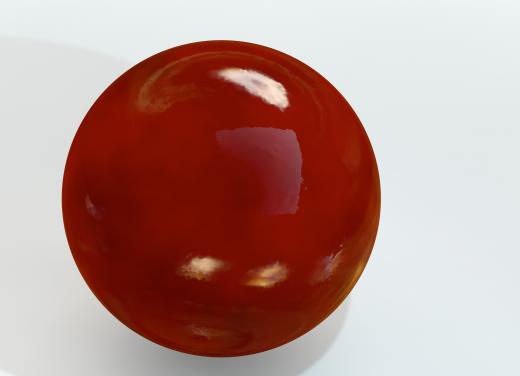Bowling balls are come in two basic sizes: ten-pin and five-pin. Ten-pin balls are typically eight and a half inches in diameter and contain three finger holes. Five-pin balls, on the other hand, have no finger holes and are five inches in diameter.
Bowling balls are also available in many weights. Adult sized versions are available in weights of 10, 11, 12, 13, 14, 15, and 16 pounds (4.5 kg to 7.2 kg). Smaller versions, which are specifically designed to fit a child’s hand, come in weights of 6, 8, 10, 12, 14, 15, and 16 pounds (2.7 kg to 7.2 kg). Upper body and arm strength need to be considered when choosing the proper weight. 16 pound balls can be tiring to someone unaccustomed to handling that amount of weight for an extended period of time.
There are four basic makes of bowling balls: urethane, reactive resin, particle, and plastic. Although all are round, each make has unique traits and a distinct feel.

Urethane bowling balls are softer than other makes. They also drag on the wooden bowling lane, which increases their hook potential. For those who tend to bowl toward the gutter, this hook can help drag the ball back to the strike zone in the center of the lane. This type of ball can be sanded or buffed to help limit the amount of hook if desired.

Reactive resin bowling balls are similar to the urethane versions in many ways. They're made by adding small particles of resin to the same mixture used to make urethane bowling balls. Resin tends to be sticky, so it further increases the ball’s grip on the lane and creates more hook potential. At the same time, resin versions tend to skid across the oiled bowling lane and, therefore, reach faster speeds.

Particle bowling balls are reactive resin balls with small ground pieces of glass added to the mix. This glass increases the ball’s grit, which helps it grip the lane. Professional bowlers generally prefer particle balls because they help make spin and hook easier to control.
Plastic bowling balls are the most common type because they are the cheapest to manufacture. Made from polyester, these balls can handle intense wear and last much longer than other types. Professional bowlers avoid plastic versions because they tend to skid across an oiled bowling lane rather than roll, which makes them harder to control.
